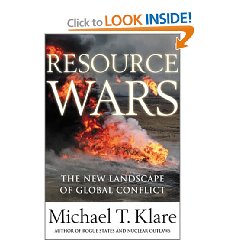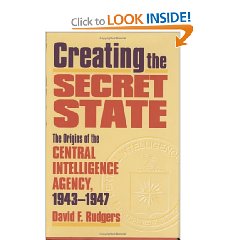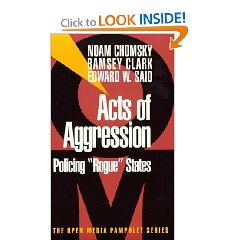This is a very thoughtful and well-documented book that has been 20 years in the making–although it was actually researched and written in the past three years, the author is on record as having discussed water wars in 1980, and should be credited with anticipating the relationship between natural resources, ethnic conflict, and great power discomfort well before the pack.
He covers oil in particular, energy in more general terms (to my disappointment, not breaking natural gas out from oil, a very relevant distinction for commodities brokers), water, minerals, and timber. His footnotes are quite satisfactory and strike a very fine balance–unusually good–between policy, military, and academic or industry sources.
Sadly, I believe that this book, as with Laurie Garrett's book on the collapse of public health, will be ignored by the …Administration, which appears to have decided that real war is only between states, that energy is something to be increased, not moderated in use, and that real men do not concern themselves with ethnic conflict, small wars, or scarcity of any sort in the Third World.
As I reflect on this book, and its deep discussion of the details of existing and potential resources wars (it includes a very fine illustrative appendix of oil and natural gas conflicts, all current), I contemplate both my disappointment that the author and publisher did not choose to do more with geospatial visualization–a fold out map of the world with all the points plotted in color would have been an extraordinary value–and the immediate potential value of adding the knowledge represented by this book on resources and the Garrett book on public health threats–to the World Conflict & Human Rights Map 2000 published by PIOOM at Leiden University in The Netherlands.
What I really like about this book is its relevance, its authority, its utility. What I find frustrating about this book is that it is, like all books, an isolated fragment of knowledge that cannot easily be integrated and visualized. How helpful it would be, if US voters could see a geographic depiction of the world showing all that the author of this excellent work is trying to communicate, and on the same geographic depiction, see the military dollars versus the economic assistance dollars that the U.S. is or is not investing. The results would be shocking and could lead to political action as the community level, for what is clear to me from this book is that there is a huge disconnect between the real threat, our national security policies, and how we actually spend our foreign affairs, defense, and trade dollars from the taxpayers' pockets.
A trillion dollar tax cut, or a trillion dollar investment in deterrence through investments in natural resource stabilization and extension? Which would be of more lasting value to the seventh generation of our children? The author does not comment–one is left to read between the lines.










